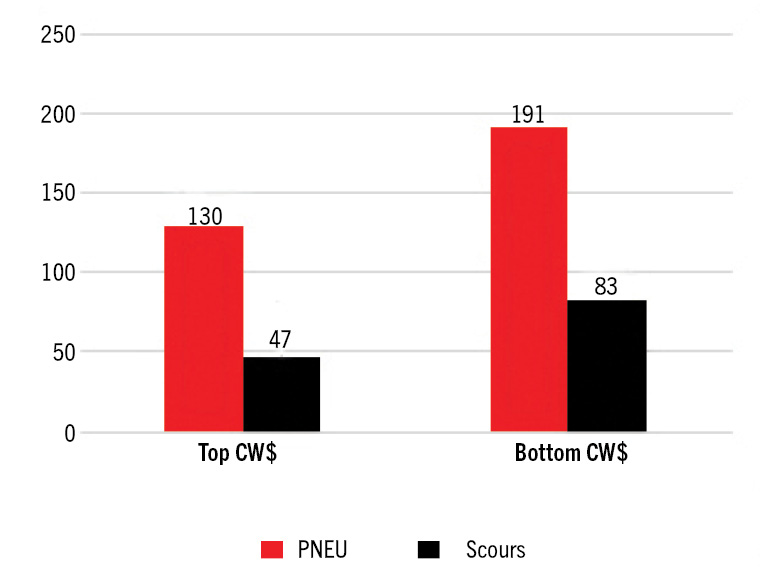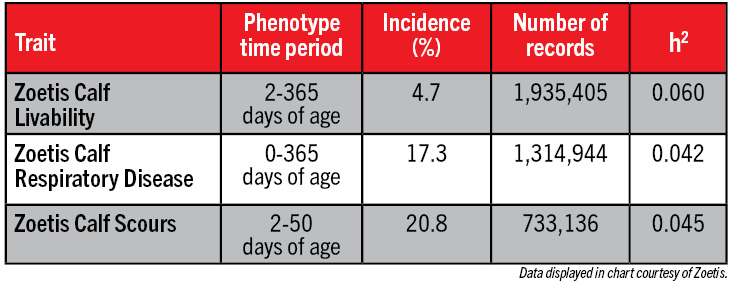On farm results
While environment, nutrition and on-farm protocols are critical to a successful calf rearing program, genetics are the foundation. By utilizing Zoetis’s Calf Wellness Index™ (CW$™), producers can select for genetics that improve
calf survivability and reduce their likelihood of becoming ill due to scours and respiratory disease. The table below shows data for calves born over a 12-month period at Rosy Lane Holsteins in Watertown, Wisconsin. When separating the top
and bottom quartiles based on CW$ values, there is a significant difference in calf health events. The top 25% of calves experienced nearly half the cases of scours compared to the bottom 25%.
Rosy Lane Holsteins progressively tracks cases of calfhood pneumonia via the use of ultrasound. Calves scoring a two or higher are recorded as a pneumonia case, which identifies calves with both clinical and subclinical pneumonia. Again, when comparing
the upper and lower quartiles, a significant decrease in pneumonia cases – roughly 32% fewer – is observed in the upper quartile.
Figure and Table 1: Rosy Lane Holsteins Calf Wellness Index top and bottom quartile analysis


Individual traits or complete index – what should you prioritize?
Zoetis’ CW$ combines evaluations for calf respiratory disease and scours to directly estimate the additional dollars these traits contribute to overall profitability. The table below shows the number of records, incidence rate and
heritability for calf wellness traits.
While calf wellness traits have a lower heritability than production or type traits, genetic improvement is evident as seen at Rosy Lane Holsteins and herds throughout the U.S. The more optimal the calfhood environment the higher the likelihood of
gene expression for calf livability.
Understanding the evaluations and gene expression is the first step to incorporating calf wellness into your selection index. Genetics are never “one size fits all” and it’s important to keep your herd’s metrics and overall goals
in mind. If pneumonia isn’t a challenge for your calves but scours are detrimental, then be strategic and target the traits that will deliver the most improvement. If you require all-around improvement in calfhood health, then leverage the complete
CW$ index.
Table 2: Number of records, incidence and heritability for calf wellness traits.

Reach out to your local Select Sires representative to evaluate your calf rearing program. Environment, nutrition, protocols, and genetics each play a critical role in calf wellness and ultimately cow productivity.